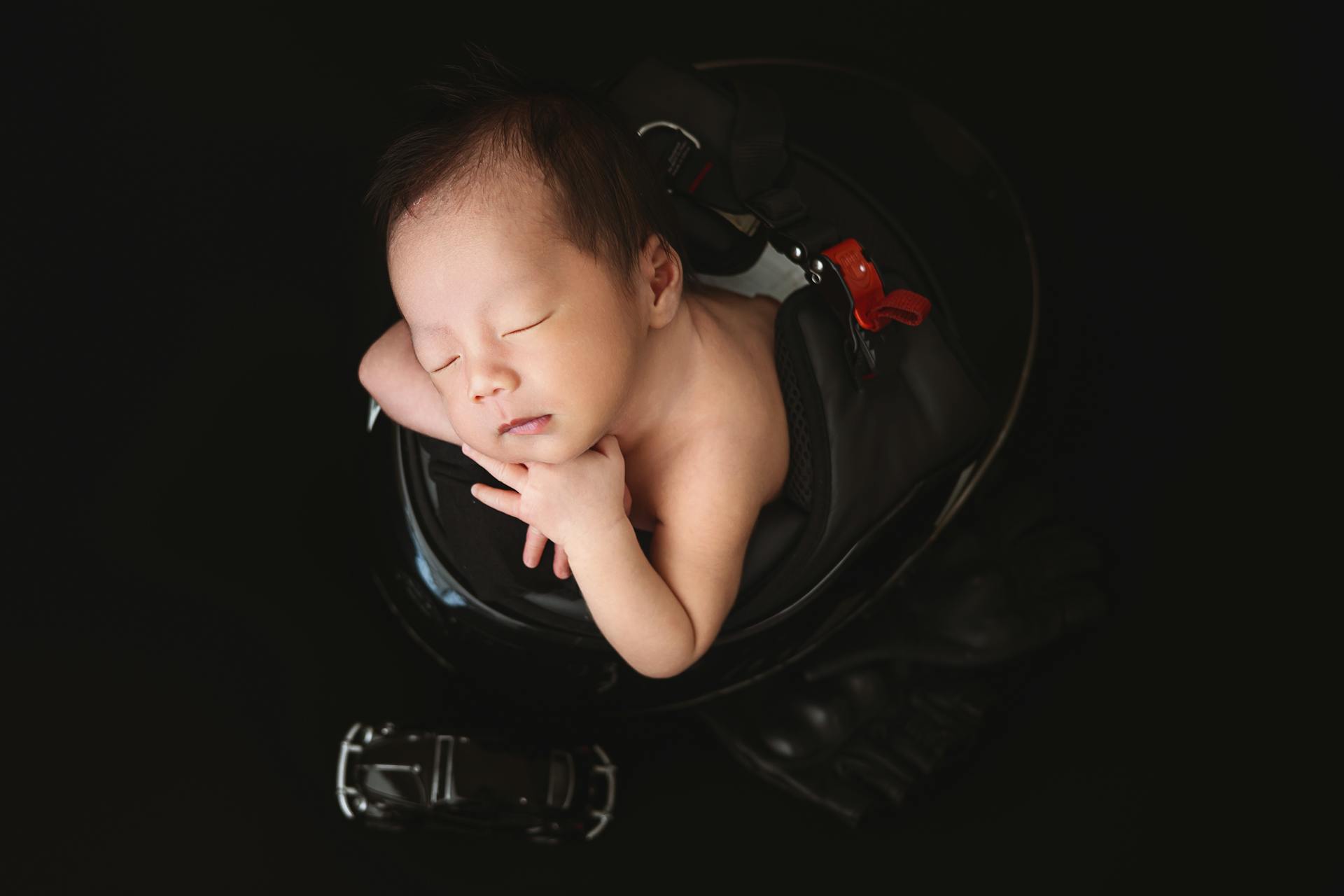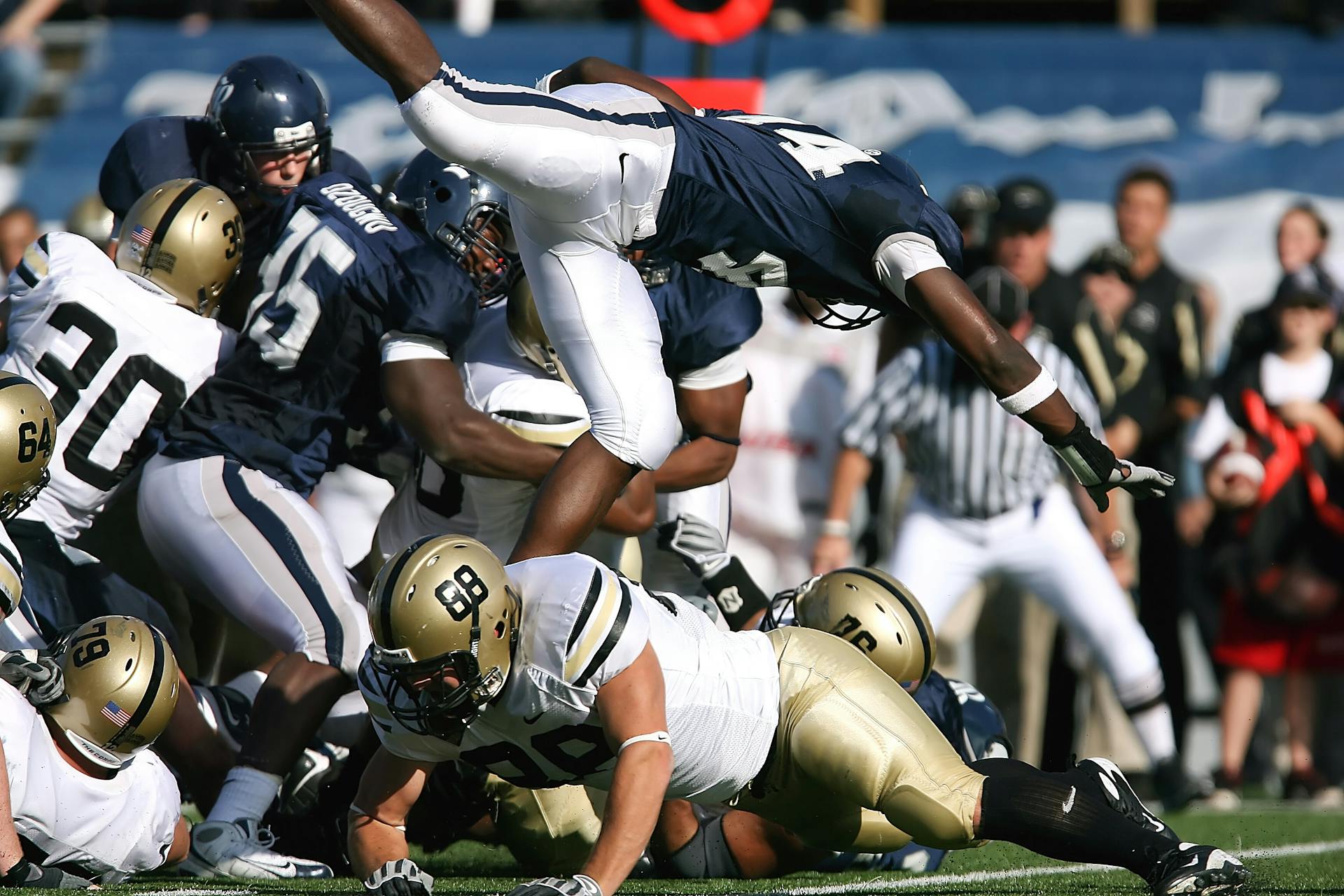
From a safety standpoint, a motorcycle helmet should be tight enough to stay on your head in the event of a crash. It should also be comfortable enough to wear for extended periods of time. The best way to find a happy medium is to try on a variety of helmets and find one that meets both of these criteria.
When it comes to how tight a motorcycle helmet should be, there is no one-size-fits-all answer. The best way to determine the perfect fit is to try on a variety of helmets until you find one that feels snug but not too tight. Once you have found a few helmets that fit well, it is important to choose one that is comfortable enough to wear for extended periods of time.
The bottom line is that there is no single answer to the question of how tight a motorcycle helmet should be. The best way to find the perfect fit is to try on a variety of helmets and find one that is both snug and comfortable.
Suggestion: Motorcycle Gloves Fit
How tight should a motorcycle helmet be when first put on?
When first putting on a motorcycle helmet, it is important to make sure that the helmet is tight enough. This can be done by following the manufacturer's instructions or by using the straps to make sure the helmet is tight. Once the helmet is tight, it should not be able to be moved around on the head. If the helmet is too loose, it could come off in an accident.
How should a motorcycle helmet feel when properly fitted?
A motorcycle helmet should fit snugly and securely on your head in order to be effective. It should not be so loose that it can slide off or be easily dislodged, but it also should not be so tight that it is uncomfortable or causes headaches. The helmet should sit level on your head, and the straps should be tightened so that the helmet cannot be easily moved around on your head.
In order to ensure that your helmet fits properly, it is important to try it on before you purchase it. If you are purchasing a helmet online, be sure to consult the size chart to find theright size for your head. When you try on the helmet, it should fit snugly all the way around your head. If it is too loose, you can try tightening the straps. If the helmet is still too loose, it is likely too large for you and you should try a different size.
It is also important to make sure that you can see clearly out of the helmet. The visor should not be cracked or scratched, and it should not impede your vision in any way. If you wear glasses, you should make sure that you can see clearly out of the helmet with your glasses on.
Once you have found a helmet that fits well and that you can see out of clearly, you should take the time to adjust the straps so that the helmet is securely in place. The straps should be tight enough that the helmet cannot be easily dislodged, but not so tight that they are uncomfortable. The helmet should sit level on your head, and the straps should cross in the back to help keep the helmet in place.
By taking the time to find a helmet that fits properly and adjusting the straps to ensure that it is secure, you can help to keep yourself safe while riding your motorcycle.
Check this out: Why Are Motorcycles so Expensive?
How can you tell if a motorcycle helmet is too tight?
If a motorcycle helmet is too tight, it will cause discomfort and may even impair your vision. There are a few ways to tell if a helmet is too tight.
If the helmet is uncomfortable, it is likely too tight. If you feel like the helmet is squeezing your head, it is definitely too tight. If you have to force the helmet onto your head, it is also too tight.
Another way to tell if a motorcycle helmet is too tight is by checking your vision. If you find that your vision is impaired when wearing the helmet, it is likely too tight. If you feel like you are being choked by the helmet, it is also likely too tight.
If you are unsure if your helmet is too tight, you can always ask a professional. They will be able to help you determine if the helmet is too tight and how to fix the problem.
How can you tell if a motorcycle helmet is too loose?
There are a few ways to tell if a motorcycle helmet is too loose. One way is to shake your head from side to side. If the helmet moves noticeably, it is too loose. Another way to tell is if you can fit more than one finger between your chin and the strap of the helmet. If you can, it is too loose. Finally, if you can tilt the helmet forward or back on your head, it is also too loose.
A motorcycle helmet that is too loose is dangerous because it can come off in a crash. If the helmet comes off, it will not protect your head, which could lead to serious injury or even death.
To make sure your motorcycle helmet fits properly, take the time to adjust it before you ride. If you are not sure how to adjust it, ask someone at a motorcycle shop for help. Once you have the helmet snug on your head, it should not move around. If it does, it is still too loose.
What are the consequences of a motorcycle helmet being too tight?
When a motorcycle helmet is too tight, it can cause a number of problems for the rider. First, it can be extremely uncomfortable, and even painful, to wear a helmet that is too tight. This can not only make it difficult to concentrate on riding, but can also be a safety hazard if the rider is not able to hear or see properly. Additionally, a too-tight helmet can also cause headaches and neck pain. In extreme cases, it can even restrict blood flow to the head, which can lead to dizziness, fainting, or even strokes.
Another danger of wearing a too-tight motorcycle helmet is that it can actually increase the risk of injury in the event of an accident. This is because a helmet that is too tight will not be able to absorb the impact of a fall or collision as effectively as one that fits properly. As a result, the rider's head and neck will be more vulnerable to injury. In addition, a too-tight helmet can also make it more difficult for the rider to remove after an accident, which can delay or prevent emergency medical treatment.
Overall, it is extremely important to make sure that a motorcycle helmet fits properly. Wearing a helmet that is too tight can be extremely dangerous, and can lead to serious injuries or even death in the event of an accident. If you are unsure of how to properly fit a helmet, it is best to consult with a professional or seek out a helmet that has adjustable straps to ensure a proper and comfortable fit.
Readers also liked: Motorcycle Helmet Fit
What are the consequences of a motorcycle helmet being too loose?
A motorcycle helmet that is too loose can have several consequences. First, it can cause the helmet to come off during a crash, which can lead to serious head injuries or even death. Second, it can hinder the rider's ability to see and hear, which can result in an accident. Finally, it can be uncomfortable and cause the rider to fatigue more quickly.
How can you adjust a motorcycle helmet to make it tighter?
Most people think that all motorcycle helmets are created equal and that they all fit the same way. This is not the case. Each helmet is different and will fit each person differently. This is why it is so important to try on a few different helmets before you decide which one to purchase.
When you find a helmet that you like, you will need to adjust it to make sure that it fits properly. The first thing you need to do is put the helmet on and make sure that it is snug. If the helmet is too loose, it will not protect your head properly in the event of an accident.
Next, you need to fasten the straps of the helmet. There are usually two straps, one that goes around your head and one that goes under your chin. You want to make sure that both of these straps are tightened so that the helmet will not move around on your head.
Finally, you need to adjust the visor on the helmet. Most helmets come with a visor that can be flipped up or down. You want the visor to be in the down position when you are riding so that you can see clearly. However, you may want to flip the visor up when you are not riding so that the wind does not hit your face.
Adjusting your motorcycle helmet is important to do every time you put it on. By taking the time to do this, you can be sure that you are as safe as possible when you are out on the road.
See what others are reading: If I Finance a Motorcycle Do I Need Insurance
How can you adjust a motorcycle helmet to make it looser?
As you know, a motorcycle helmet is a very important piece of safety gear. If it is too loose, it can come off in an accident, which could obviously be very dangerous. Here are a few tips on how to adjust a motorcycle helmet to make it looser:
1. Check the sizing information that came with your helmet. Motorcycle helmets generally come in small, medium, and large sizes. Make sure you choose the right size for your head. If you are between sizes, it is better to go with the smaller size.
2. If your helmet has a retention system (such as a D-ring or chin strap), make sure it is adjusted properly. The retention system should be tight enough that the helmet cannot be pulled off your head, but not so tight that it is uncomfortable.
3. Most motorcycle helmets have some type of padding inside. This padding can be adjusted to make the helmet looser or tighter. Usually, there are Velcro straps or similar fasteners that allow you to adjust the padding.
4. If your helmet has ear flaps, make sure they are positioned properly. The ear flaps should be above your ears, not covering them.
5. Once you have adjusted all of the straps and padding, put on the helmet and shake your head from side to side. The helmet should not move around on your head. If it does, make the necessary adjustments until the helmet fits snugly.
By following these tips, you should be able to adjust your motorcycle helmet to make it looser or tighter, depending on your needs. Remember, a properly fitting helmet is important for both safety and comfort, so take the time to get it right.
Related reading: Size Motorcycle Cover
Is it better to have a motorcycle helmet that is too tight or too loose?
The fit of a motorcycle helmet is important for safety, as a helmet that is too loose can come off in a crash, and a helmet that is too tight can be uncomfortable and can restrict vision. There is no definitive answer as to whether it is better to have a motorcycle helmet that is too tight or too loose, as each situation has its own risks and benefits.
If a motorcycle helmet is too loose, it can easily come off in a crash. If the helmet does not fit snugly, it can be thrown off by the force of the impact, leaving the rider's head unprotected. This can lead to serious injury or even death. Additionally, a loose helmet can obstruct the rider's vision, as it can shift and obscure their view of the road.
On the other hand, if a motorcycle helmet is too tight, it can be extremely uncomfortable. It can cause headaches, dizziness, and fatigue, and can also restrict the rider's vision. A tight helmet can also make it difficult to breathe, which can be dangerous in a crash.
The best way to ensure that a motorcycle helmet fits properly is to try it on before purchasing it. It is also important to check the fit periodically, as head sizes can change over time.
Frequently Asked Questions
How tight should a motorcycle helmet strap be?
It should be tight but have enough room to fit one or two fingers between the strap and your chin/throat. With the chin straps fastened, try leaning forward and rolling the helmet off your head. It shouldn’t move. The helmet shouldn’t move around if you shake your head from side to side, or up and down, but your skin should move with the helmet.
Is your motorcycle helmet too loose or too tight?
Here’s how to check if your motorcycle helmet is too loose or too tight: 1) Stand up and fasten the helmet’s chin strap. Refer to your motorcycle’s owner’s manual for instructions on tightening or loosening the strap. 2) Sit down and take a look in a mirror. The helmet should fit snugly against your head, with little or no movement. If there is excessive movement, the helmet may be too loose. If it’s still too loose, proceed to step 3. 3) Pull the helmet slightly away from your head so that you can see the inside surface of the facemask. The facemask should sit against your cheeksbones comfortably, without any wrinkles or gaps. If it doesn’t, the mask may be too large or too tight and need to be replaced.
Why is it important to choose the right size motorcycle helmet?
There is no single answer to this question as the size of a motorcycle helmet is personal preference. However, choosing the wrong size motorcycle helmet can be potentially dangerous because it may not fit correctly and it may not protect your head in the event of an accident. How do I choose the right size for my motorcycle helmet? There is no one-size-fits-all answer to this question, as the size of a motorcycle helmet will vary depending on your own individual head shape and size. However, below are some general guidelines that may help you choose the right size. If you are between sizes, go with the smaller size. If you arebetween sizes, go with the smaller size. If you have a round head, go for a smaller size. If you have a round head, go for a smaller size. If you have an oval or flattened/bulky head, go for a larger size. If you have an oval or flattened
How do I know if my motorcycle helmet fits?
Each motorcycle helmet is manufactured with a specific fit and sizing. To ensure your motorcycle helmet fits properly, try the following fit test. 1. Remove your motorcycle helmet from its packaging and put it on. If you have an adjustable helmet, adjust the chinstrap as necessary. 2. Fit the cheek pads over your cheeks so that they rest evenly without squeezing sides of your face. 3. Push against the chin bar so that the face shield does not touch your nose or chin (unless the helmet features a neck roll). If there is any discomfort, see a fitted motorcycle helmet specialist for a more tailored fit.
How tight should the chin strap be on a helmet?
Most manufacturers recommend a tight fit, with enough room to fit one or two fingers between the strap and your chin or throat.
Sources
- https://www.headsdontbounce.com/motorcycle-helmets/how-tight-should-a-motorcycle-helmet-be/
- https://packupandride.com/how-tight-motorcycle-helmet/
- https://themotogears.com/how-tight-should-a-motorcycle-helmet-be/
- https://motorcycleaccident.org/how-tight-should-a-motorcycle-helmet-be/
- https://helmetshelper.com/how-tight-should-a-motorcycle-helmet-be/
- https://www.motorbikespace.com/should-motorcycle-helmets-fit-tight/
- https://www.motorbiscuit.com/how-motorcycle-helmet-fit/
- https://themotorbiker.com/how-tight-should-a-motorcycle-helmet-be/
- https://helmetsinsider.com/motorcycles/faq/tell-if-helmet-too-small/
- https://motoprove.com/how-to-tell-if-motorcycle-helmet-is-too-small/
- https://www.youtube.com/watch
- https://www.cardosystems.com/blog/how-to-tell-if-motorcycle-helmet-is-too-small/
- https://kaze.norushcharge.com/frequently-asked-questions/how-do-i-know-if-my-motorcycle-helmet-is-damaged
- https://headsafetyguard.com/how-snug-should-a-motorcycle-helmet-be/
- https://www.reddit.com/r/motorcycles/comments/f064di/helmet_fits_ok_without_cheek_pads_too_tight_with/
Featured Images: pexels.com


